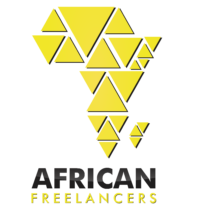Setting the right freelance rates is one of the most critical decisions a freelancer can make. As a freelancer, your pricing reflects the quality of your skills, your confidence in your abilities, and your understanding of the market. Setting rates too low may attract clients who undervalue your work, while pricing too high without justification could drive potential clients away. Striking the right balance ensures financial sustainability and credibility in a competitive landscape.
For African freelancers, this balance can be particularly tricky. Clients, especially international ones, may assume lower rates due to stereotypes about the cost of services from Africa. This perception can create pressure to underprice your work. Also, the exchange rate between African currencies and stronger global currencies like the US dollar or Euro can complicate pricing strategies. Freelancers may struggle to determine rates that align with their local cost of living while remaining competitive globally. Freelancers targeting local clients may face difficulties charging rates that account for their true value due to the economic conditions in some African markets.
This guide will help you determine your ideal freelance rate. Let’s get into it.
Factors to Consider When Setting Your Rates
Determining your freelance rates isn’t a one-size-fits-all process. Your pricing should reflect the value you bring to the table, your market conditions, and your target audience.
1. Expertise
Your level of expertise plays a significant role in deciding how much to charge. Clients are generally willing to pay more for freelancers who demonstrate advanced skills, proven experience, and a strong track record. If you’re just starting out, your rates may be on the lower end. This isn’t about undervaluing yourself—it’s about attracting your first clients and building your portfolio.

For beginners, focus on smaller projects that allow you to gain testimonials, showcase your work, and refine your skills. As you gain experience and a solid portfolio, you can transition to higher rates. Intermediate freelancers should focus on highlighting case studies, measurable results, or unique expertise to justify their pricing. Experts with specialized skills or years of experience in a particular field can confidently charge premium rates. At this level, your pricing reflects not just your time but also the value and insights you bring. Take a quick look at some of the top skills African freelancers need to learn.
2.Market Research
Understanding the market is crucial when setting freelance rates. Researching what other freelancers in your niche and region charge provides valuable context and benchmarks. Look for industry-specific rate guides or explore freelance platforms to see what others are charging for similar services. For example, a freelance graphic designer will likely charge differently from a content writer or software developer.
African freelancers often face pricing challenges due to regional economic disparities. If you’re targeting local clients, consider the affordability of your services within your market. Conversely, if you’re working with international clients, benchmark your freelance rates against global standards while accounting for exchange rates and competitive advantages. Use tools like Payoneer’s Freelancer Income Report or platforms like Glassdoor to gather insights about industry rates. These tools can help you position yourself competitively.
3. Client Budget and Target Audience
Your freelance rates should also reflect your target client’s ability to pay. This requires careful consideration of whether you’re working with local or international clients. For example, what you will charge local clients in your region is different from what you should charge international clients. Accordingly, for large projects or corporate clients, consider setting project-based or retainer rates instead of hourly pricing. This approach can be more appealing to high-budget clients and ensures you’re compensated fairly for the scope of work.
Common Freelance Rates Pricing Models
Choosing the right pricing model is essential for aligning your rates with your workflow, client expectations, and project scope. Each model has its advantages and works best in specific scenarios.

Hourly Rates
With hourly pricing, you charge clients based on the number of hours worked. This model is straightforward and works best for projects where the scope is flexible or difficult to define upfront.
When Hourly Rates Work Best:
- Short-Term Projects: Hourly rates are ideal for smaller or quick tasks where the total time commitment is predictable.
- Ongoing Work: If you’re hired for ongoing services like virtual assistance, consulting, or editing, an hourly model ensures you’re compensated fairly for your time.
- Uncertain Scope: Projects that might evolve or expand, such as software development or research, benefit from this flexible pricing.
To ensure transparency, use time-tracking tools that record your hours accurately and provide detailed reports to clients. Use tools like Toggl, Clockify, or Hubstaff.
Here are some more tools that can help your freelance business.
Project-Based Rates
Project-based pricing involves charging a flat fee for a specific deliverable or outcome, regardless of how much time it takes. This model is popular for well-defined projects where both you and the client agree on the scope in advance.
When Project-Based Rates Work Best:
- Clearly Defined Deliverables: Projects with clear goals, such as designing a logo, writing a blog post, or developing a website.
- Value-Based Services: If your work directly impacts the client’s revenue or business goals (e.g., SEO optimization or sales copywriting), a flat fee allows you to charge for the value you provide, not just the hours worked.
- Creative or Technical Work: Many creative professionals, such as graphic designers and writers, prefer project-based rates for simplicity and better profit margins.
How to Price Projects:
- Break the project into milestones or deliverables
- Estimate the total hours needed, including revisions, and multiply by your hourly rate.
- Add a buffer to account for unexpected delays or extra work.
Clearly outline the scope of work in your contract to avoid scope creep, where clients request additional work beyond the agreed-upon terms.
Retainer Agreements
A retainer agreement is a long-term arrangement where the client pays a fixed amount upfront for guaranteed services over a specified period, such as a month. This model provides stability and predictable income for freelancers.
When Retainers Work Best:
- Ongoing Support: Clients who need regular services, such as social media management, content creation, or IT support, benefit from retainers.
- Trusted Relationships: Retainers are ideal when you’ve built trust with a client who values your work and wants to secure your availability.
- Strategic Partnerships: If your work involves ongoing strategy (e.g., digital marketing or PR), retainers allow for a collaborative, long-term approach.
Tip: Include a clause in your retainer agreement for unused hours or deliverables to prevent clients from overbooking your time without additional compensation.
How To Choose the Right Freelance Rate Model
Your pricing model should reflect the nature of your work and your client’s expectations. For instance:
– Use hourly rates for flexible or unpredictable tasks.
– Opt for project-based pricing when deliverables are clear and well-defined.
– Secure retainer agreements for consistent work and income stability.
Conclusion
Setting your freelance rates is a journey of self-evaluation, market awareness, and confidence. When you understand your value and choose the right pricing strategies, you can achieve financial success and build a sustainable freelance career. Take the time to assess your skills, research your market, and adjust your rates as you grow. For more insights and tips, explore other articles on our blog and join a community of African Freelancers where you can share experiences, learn from others, and grow together.
Olajumoke Okunade
Olajumoke is an expert content writer with years of experience delivering content that converts





